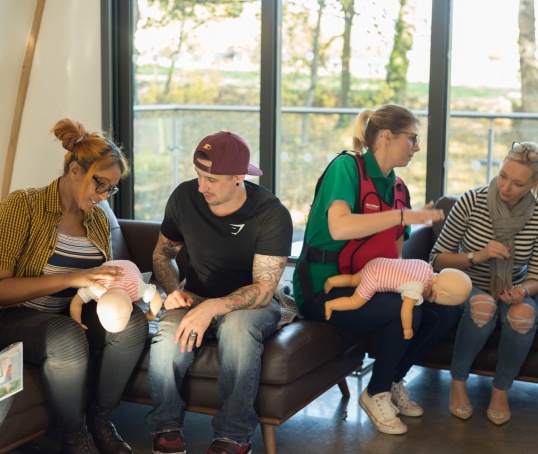How do you know your baby is teething, and how can you soothe their symptoms? Find out how to recognise the signs and what can help.
Signs of teething
Teething is the process of a baby’s milk teeth erupting through the gums, which can cause swelling and tenderness (NICE, 2020).
While a few babies are born with teeth, most babies will start teething at around six months old. Some develop teeth before four months old and others won’t get them until they’re 12 months old (NHS, 2022a).
By the age of two or three, most children will have all their baby teeth (NHS, 2022a).
While some babies have no pain or discomfort, in others you might notice:
- Sore gums that may appear different in colour where the teeth are coming through
- Mild temperature of less than 38°C
- One flushed cheek
- Rash on their face
- Rubbing their ear
- Dribbling more than usual
- Gnawing and chewing on objects
- Crying and fretful
- Not sleeping well
(NHS, 2022a)
What’s not a sign of teething?
While many parents report diarrhoea as a symptom, it is not a sure sign of teething (NHS, 2022a; Memarpour et al, 2015).
Teething can cause a baby to have a very mild temperature of less than 38°C. If they have a fever of over 38°C, seem very upset or clearly unwell, then don’t assume it’s teething. Get medical help right away (NICE, 2020).
Caring for your teething baby
Teething can be tough for your baby, and it can be hard for parents or caregivers to see their baby upset.
The most effective ways of soothing pain for a teething baby are:
- Teething toys – these can give a baby something safe to bite down on. You can cool them in the fridge to help soothe your baby’s gums. Avoid putting them in the freezer because they could hurt your baby’s mouth.
- Rubbing their gums with your clean finger.
- Cuddling or playing with your baby can distract them from teething.
(NHS, 2022b; Memarpour et al, 2015)
Other effective ways to ease teething pain include:
- For babies over 6 months, chewing on healthy foods, such as raw fruits and vegetables or a crust of bread or breadstick. Don’t leave a baby alone when they’re eating.
- Infant paracetamol and ibuprofen can be given to babies over three months old.
(NHS, 2022b)
Teething necklaces
Teething necklaces worn by babies can be dangerous if they don't break open easily. Make sure they can come apart to protect your baby’s airway (Soudek, 2017).
Teething gels
There is a lack of evidence that teething gels work, but many parents want to use something. Those with a mild local anaesthetic are available from pharmacies and should only used by babies over five months. Other oral pain relief gels are not suitable for children under 16 (NHS, 2022b; NICE, 2020).
There isn't any evidence that homeopathic teething products work either. If you want to try a homeopathic product, make sure it’s licensed for use in the UK. Some products sold on the internet have been shown to have serious side effects (NHS, 2022b).
Teething rash
Some babies dribble a lot when teething, and the saliva irritates their skin. Wiping away the dribble regularly reduces the chance of a rash (NHS, 2022b; NICE, 2020). Your pharmacist may be able to recommend a soothing cream.
Further information
Our NCT infant feeding line offers practical and emotional support with feeding your baby: 0300 330 0700.
We also offer New Baby courses which are a great way for new parents to feel more confident.
Make friends with other parents-to-be and new parents in your local area and see what NCT activities are happening nearby.
Memarpour M, Soltanimehr E, Eskandarian T. (2015) Signs and symptoms associated with primary tooth eruption: a clinical trial of nonpharmacological remedies. BMC Oral Health. 15:88. https://doi.org/10.1186/s12903-015-0070-2
NHS. (2022a) Baby teething symptoms. https://www.nhs.uk/conditions/baby/babys-development/teething/baby-teet… [2 Aug 24]
NHS. (2022b) Tips for helping your teething baby. https://www.nhs.uk/conditions/baby/babys-development/teething/tips-for-… [2 Aug 24]
NICE. (2020) Teething. https://cks.nice.org.uk/topics/teething/ [2 Aug 24]
Soudek L. (2017) Fad over fatality? The hazards of amber teething necklaces. Paediatr Child Health. 22(Suppl 1):e38. http://doi.org/10.1093/pch/pxx086.096






